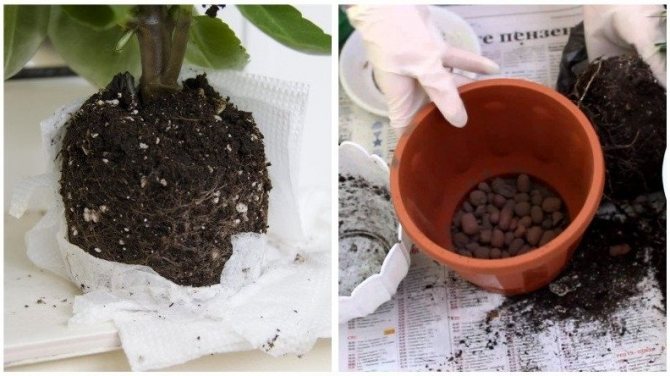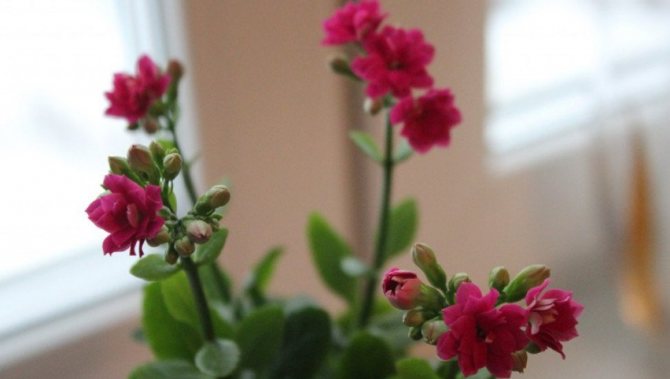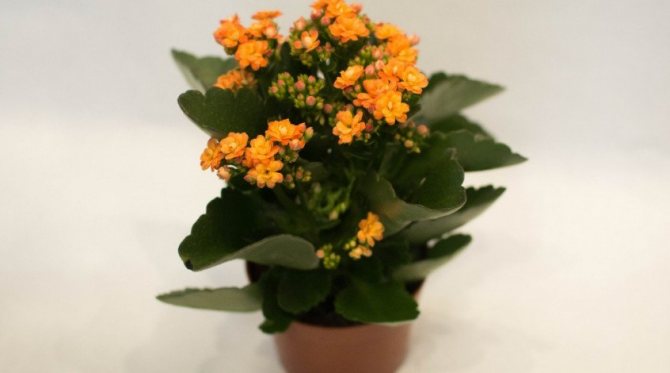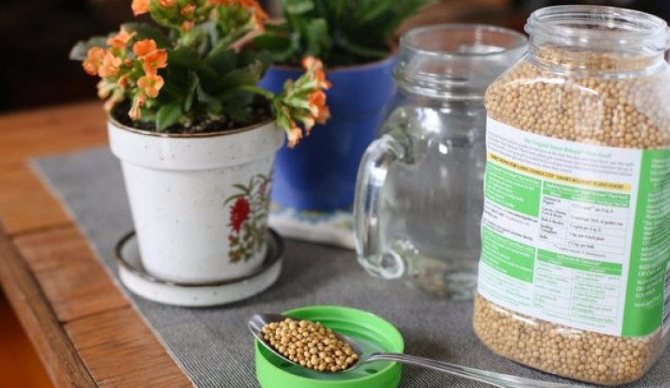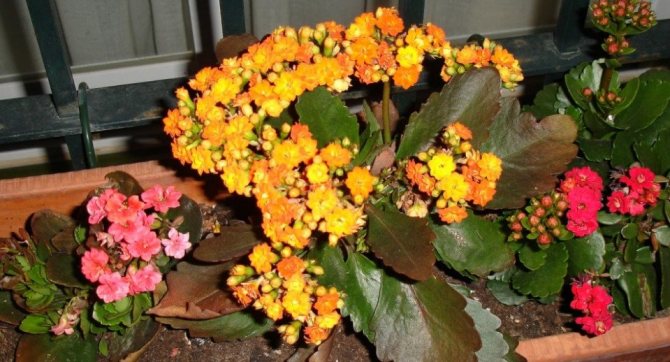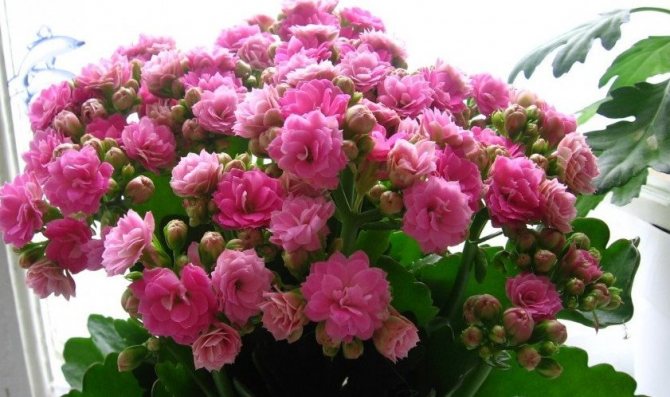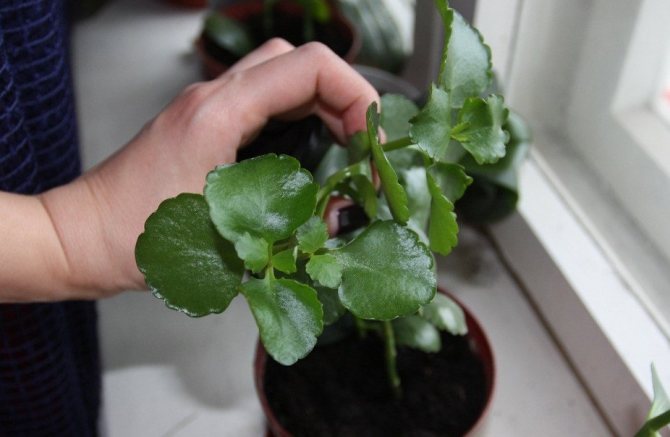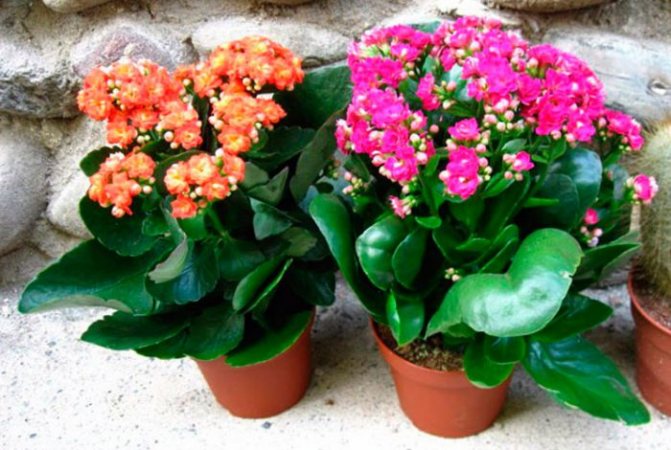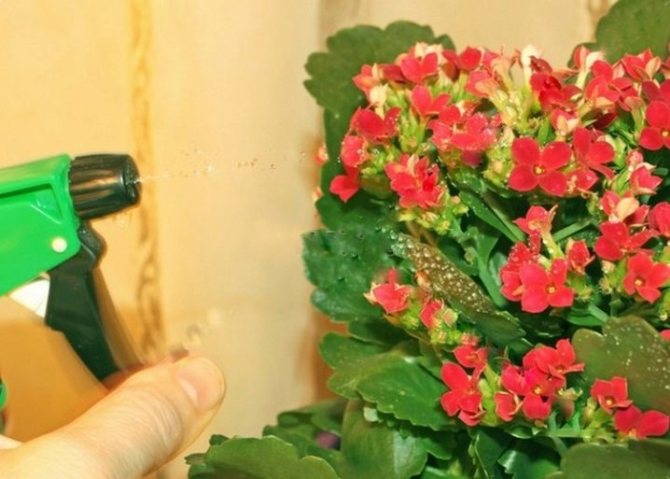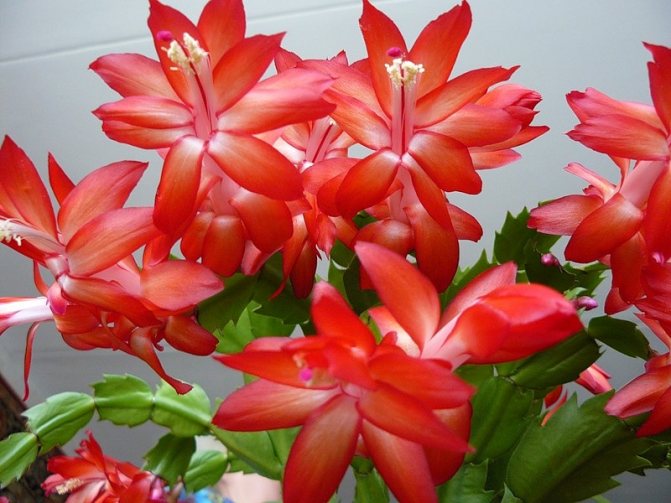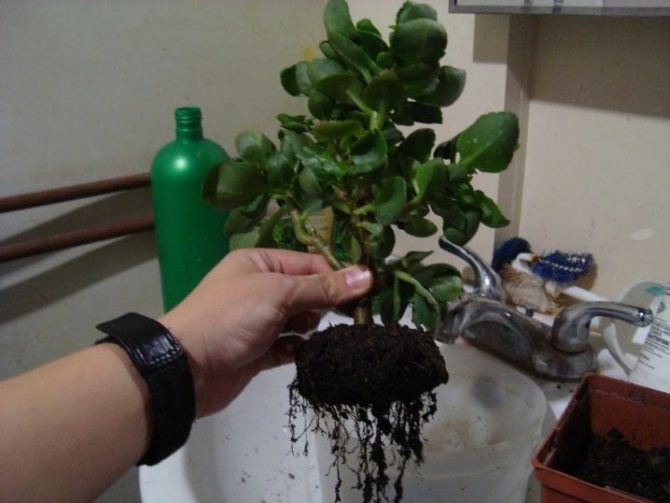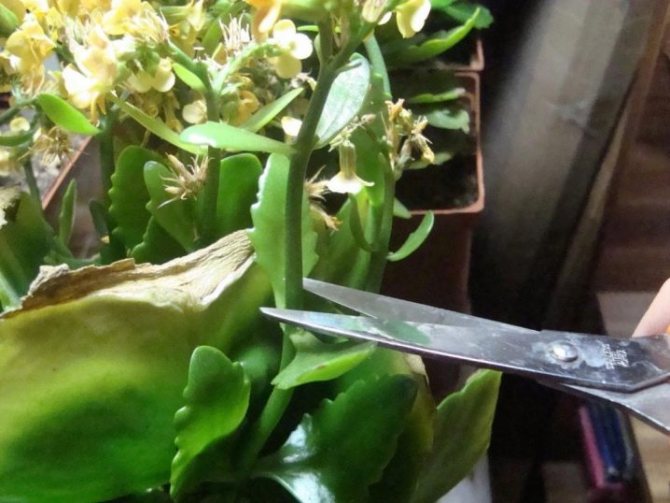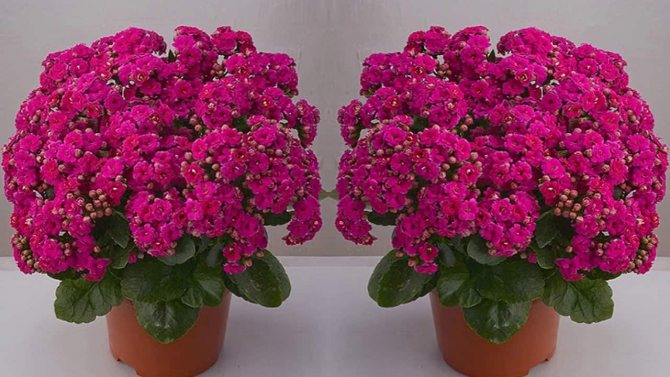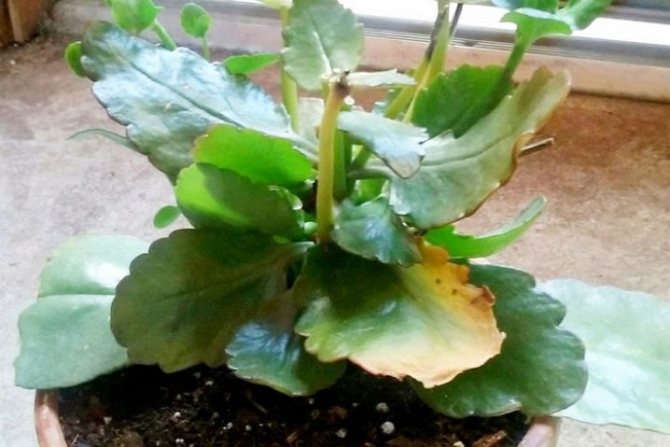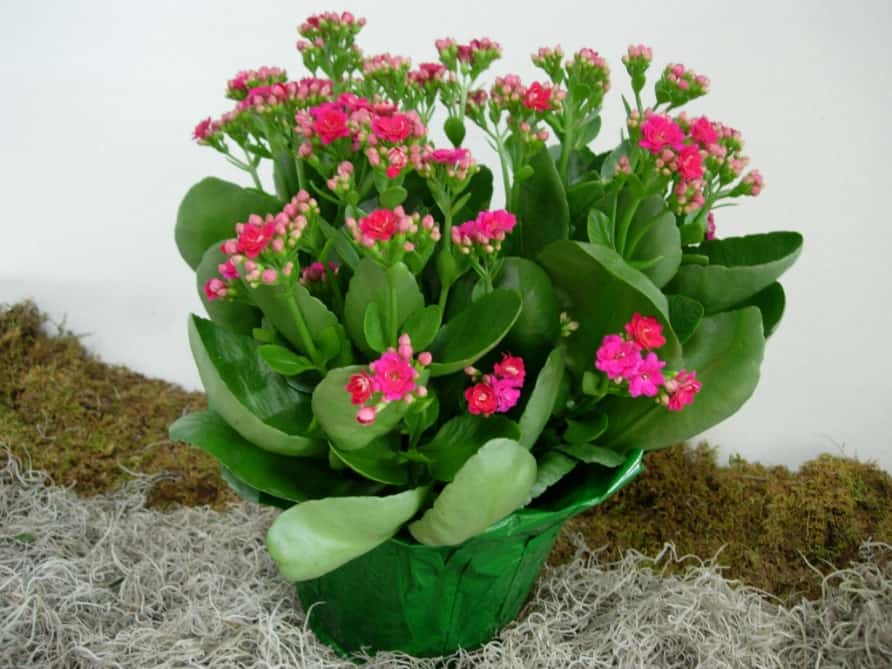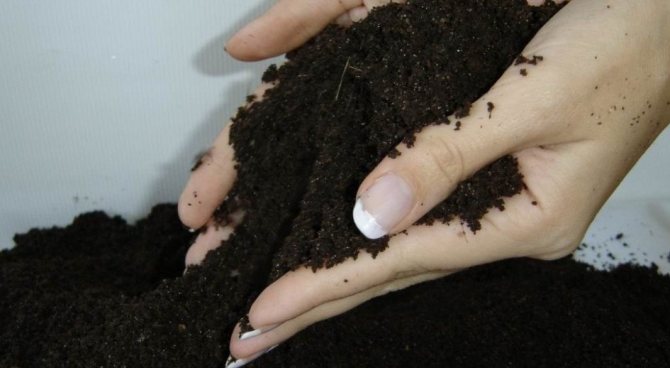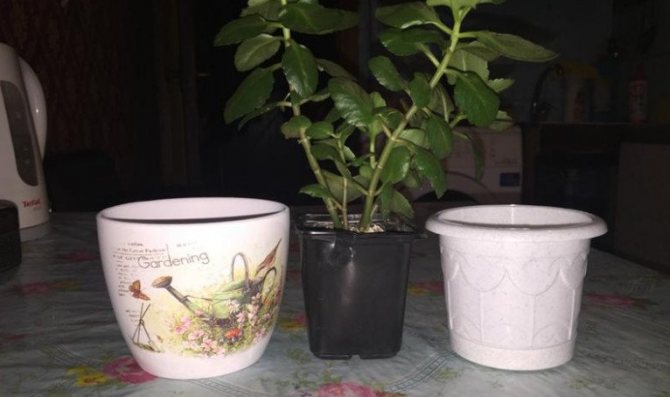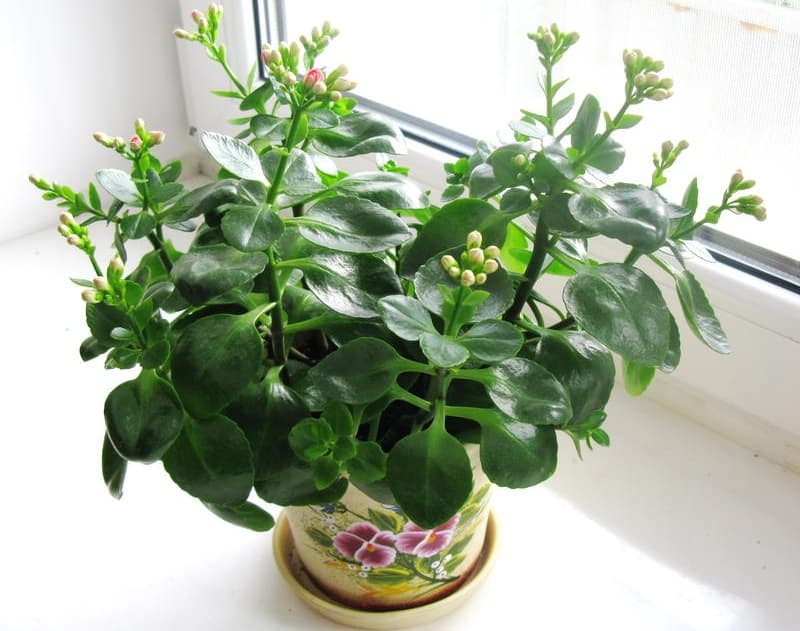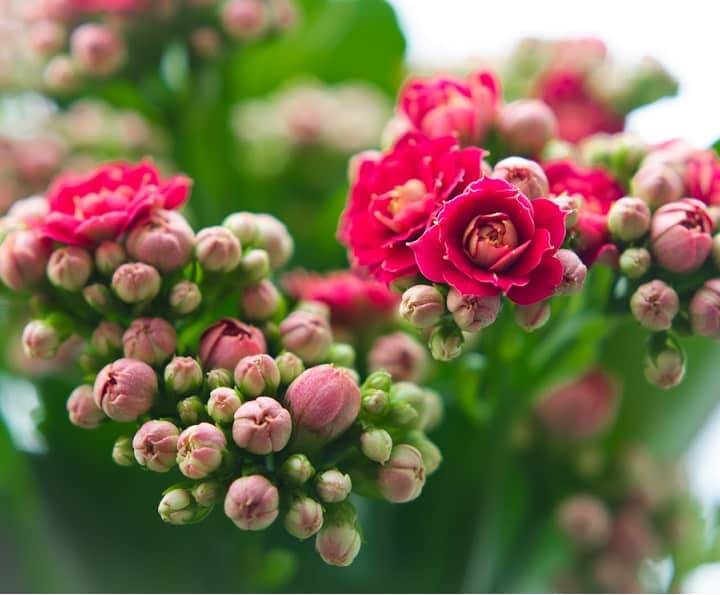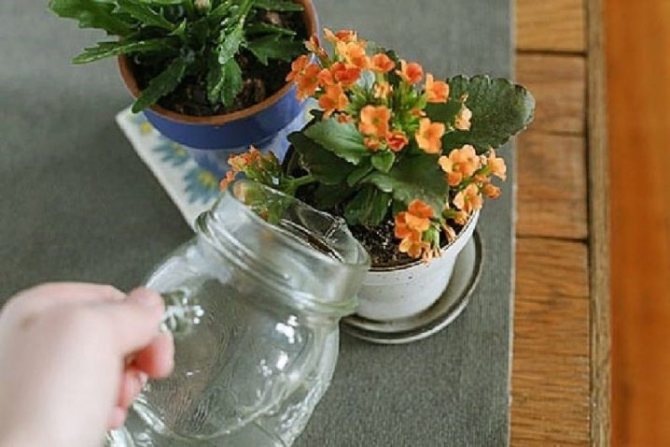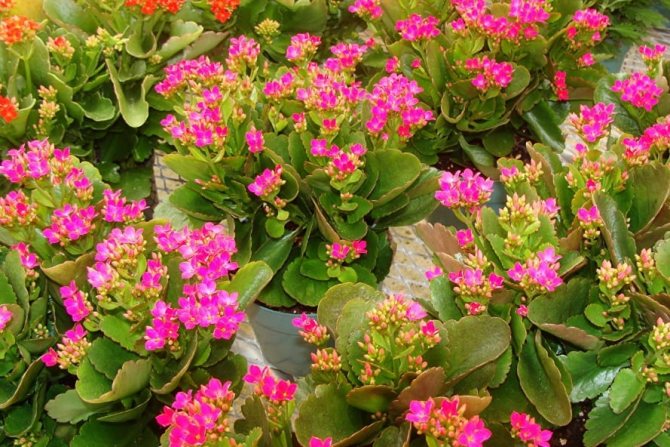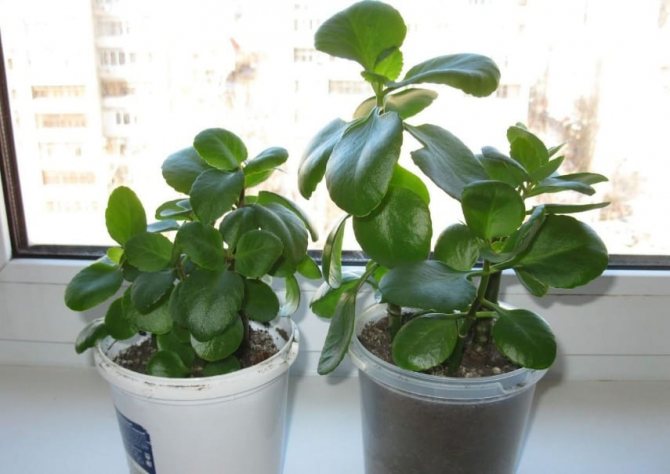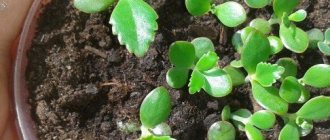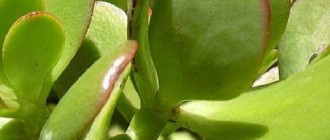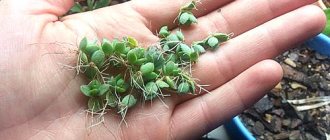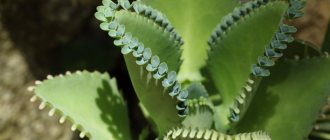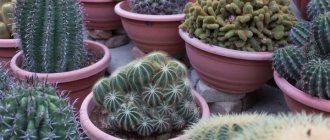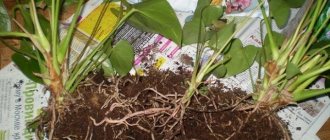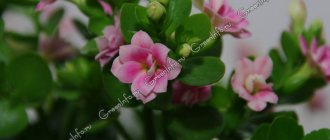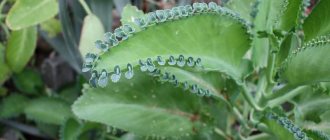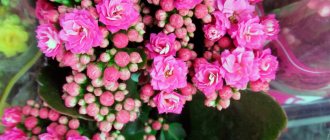Kalanchoe has recently become extremely popular. There are several explanations for this. The first explanation is the decorative qualities of the Kalanchoe. The second explanation is the healing qualities that are endowed with two types of Kalanchoe - feathery and degremona. Kalanchoe juice is used in surgery, dentistry, otolaryngology, in obstetric and gynecological practice, for cosmetic purposes, and helps to cope with the consequences of gastritis and ulcers. The phytopreparation has regenerating and anti-inflammatory properties. There are more than two hundred varieties and hybrids of Kalanchoe in the world, but the following species are most often bred: pinnate, blossfeld, Kalandiva, degremon.
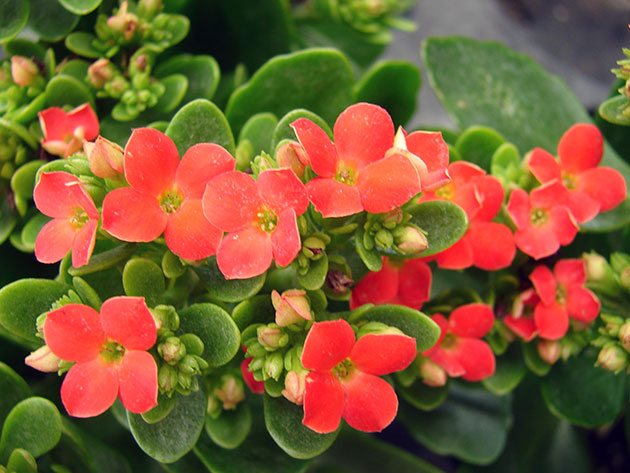
Indoor Kalanchoe.
Kalanchoe is an unpretentious house plant that requires minimal attention to itself. Compliance with basic rules will give a good result:
- Adequate sunlight
- The room temperature should not be below 15 ºC and above 29 ºC
- Optimal amount of moisture
- The air should not be too dry and not too humid.
- Regular pruning of the plant, its faded part
- Regular fertilization of the soil
- Plant protection from pests or control of them
Pot for Kalanchoe
An equally important issue is the pot and the earthen mixture in it. Quite, both a plastic and a ceramic pot with small protrusions at the bottom are suitable, since the Kalanchoe has a negative attitude towards moisture stagnation. If you take the most ordinary clay pot, then this will be the best option for this plant. It is advisable to put drainage in the pot. It should have a minimum of free space.
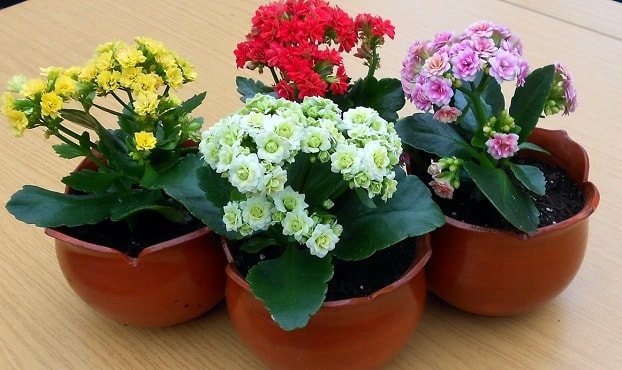

It is absolutely impossible to plant a small plant in a huge pot, in the hope that the flower will grow over time. It is unacceptable to plant any other plant, flower or tree in one pot with a Kalanchoe. As for the contents of the pot, store-bought succulent soil is a good option. You can try to create the soil yourself. To do this, use humus (leafy earth), sand or perlite, peat, and put pebbles below. But for Kalanchoe, you can take a peat mixture or universal and add sand there. You can mix a general store mix with sand, but it is important to remember that the soil in the pot should not dry out quickly.
Reproduction
How does it multiply Kalanchoe breeds at home?
- Cuttings... For these purposes, choose a beautiful, even Kalanchoe stalk, its length should be approximately 8-10cm. This largely determines how an adult plant will look.
How to root Kalanchoe? It is cut from the mother plant and planted in a separate containerfilled with sand. The sand is pre-moistened.The leaves that are located at the bottom of the stem should be as close to the surface of the soil as possible. After disembarking, the handle is covered with a transparent glass.
After reproduction of Kalanchoe by cuttings, the young plant begins to create its root system within a week after transplantation. And after six months, its flowering is already quite likely.
When Kalanchoe begins to take root, it is recommended to pinch it periodically.This will provoke the growth of additional buds and the formation of a lush, neat plant.
- Leaflet... How to grow a Kalanchoe from a leaf? The Kalanchoe leaf should be propagated in late spring - early summer. To do this, a leaf is separated from the plant and placed in water in order for it to take root.
How to plant a leaf or how to propagate a Kalanchoe with a leaf? You can immediately pre-moistened sand. Remarkably, even fallen leaves can take root and take root. - Children... On the edge of the leaves of some varieties of Kalanchoe (as they are also called, viviparous), babies are formed - small brood buds.
Thus, these buds eventually fall off, give roots, after which daughter ones grow right next to the main plant. They can be transplanted almost immediately into a separate container into ready-made soil for Kalanchoe. 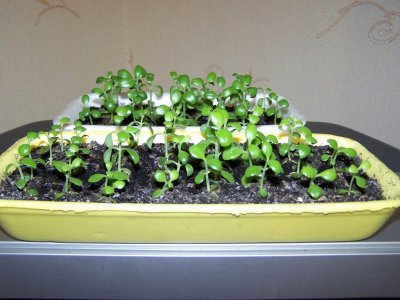

Seeds... Multiply kalanchoe seeds most often used when they want to get exotic species of this plant, which are difficult to get commercially in an adult state.
The soil for sowing seeds is sandy peat... With the onset of spring, the sowing material is evenly distributed on the soil surface and lightly pressed with your hands.The sowing container is covered with glass or transparent film and put in a bright place.
In this case, the temperature in the room should not drop below 20 degrees. A pulverizer is used to moisten the soil. It is necessary to constantly monitor that the soil is constantly moistened.
After the first shoots appear glass or film is removed. Weak and diseased seedlings are disposed of, and strong and healthy plants are transplanted into pots.
- Air roots... How to breed Kalanchoe using air roots? Air roots appear on cuttings of some Kalanchoe species. This air-rooted stalk can be cut and planted in a separate container.
The material will take root very quickly and very soon a healthy adult plant will turn out from it.
What is the size of the pot
The shop Kalanchoe needs to be transplanted within six months, preferably in early spring. The new pot should be a few centimeters larger than the previous one. This is the basic principle of transplanting such plants.
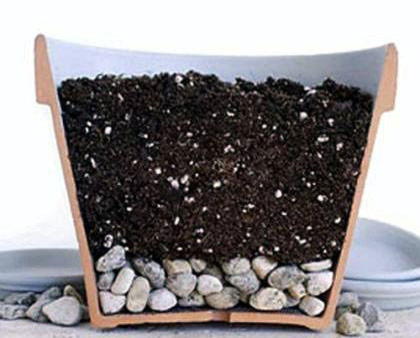

The best container size for Kalanchoe is about twelve to seventeen centimeters, depending on the variety and variety. You should not take a large and wide pot, since the Kalanchoe has a small root system. Kalanchoe will develop well if in early spring it is carefully transplanted into a larger pot, while adding fertile soil.
Features of care after planting
Kalanchoe tolerates landing / transfer normally. But after it you need to provide the plant with the most comfortable conditions.
Location and conditions of detention
Kalanchoe must be protected from direct sunlight. It is best to install it on eastern or western windowsills with abundant diffused lighting.
The temperature regime in the summer season must be maintained within + 20 ... + 28 ° С, in the winter - + 12 ... + 18 ° С. In the cold season, the Kalanchoe has a dormant period.
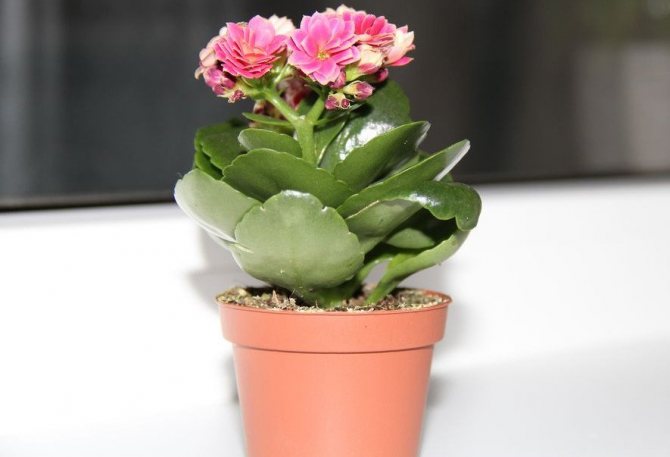

The humidity regime is also important. Kalanchoe tolerates dry air well, but it will develop better if the humidity is maintained within 50-60%. An increase in this threshold leads to the accumulation of liquid in the leaves and stems, which is fraught with decay.
As dust accumulates on the leaves, you need to wipe them with a damp swab. It is better not to shower and spray in order to avoid stagnation of liquid in the leaf sinuses.
Watering
Soil moisture should be moderate. Succulents can go without water for a long time, and overflow leads to root rot. Watering is carried out in the warm season once a week.In winter, the intensity of watering is reduced. If the air temperature fluctuates up to + 15 ° С, watering can be carried out once a month, at higher temperatures - 2 times a month.
It will be interesting for you to read about the varieties of Kalanchoe and their care:
Water is applied along the edge of the pot until it flows out of the drain holes. Then the liquid is drained. After 15–20 minutes, check the pan again for the presence of liquid. If it is, drain and wipe the pan dry. Bottom watering is not very effective, since it is impossible to determine the degree of soil moisture.
Water for irrigation should only be at room temperature, separated, without chlorine impurities. It is convenient to use a watering can with a long nose to introduce moisture into the soil.
Fertilization period
Top dressing after transplanting can be started no earlier than a month later. The interval between dressings is 20-30 days. The last time the fertilizer is applied is in September.
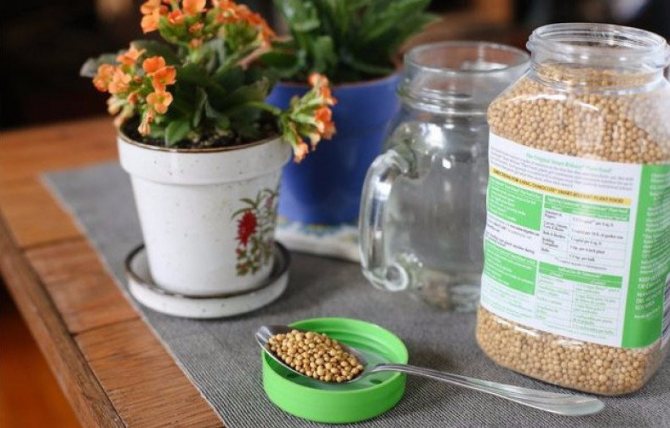

The universal fertilizer "Stimovit for cacti and succulents" has proven itself quite well. It is used for faster rooting of cuttings, when transplanting weakened plants. Throughout the growing season, the drug is introduced as a root top dressing.
It is diluted in water in a ratio of 1:40 (25 ml / 1 l). The preparation is made on the basis of vermicompost, it is completely natural, without various additives, it contains the whole complex of minerals that succulents need.
Important! When choosing fertilizers, be sure to read their composition. Kalanchoe large amounts of nitrogen are contraindicated - their optimal ratio to the total volume of other micro- and macroelements
—
7–10%.
For feeding, you can also use fertilizers prepared by yourself. For example, banana skins are a good option. They are dried in an oven at a temperature of + 100 ° C, and then ground into powder. Use dry, adding 1 tsp. powder on each plant, embedding in the soil.
You can also use compost in combination with wood ash. For 100 g of compost add 1 tbsp. l. ash. All this is mixed well. For one plant, spend 1 tbsp. l. composition.
All 3 described options can be applied in turn, with an interval of 20 days.
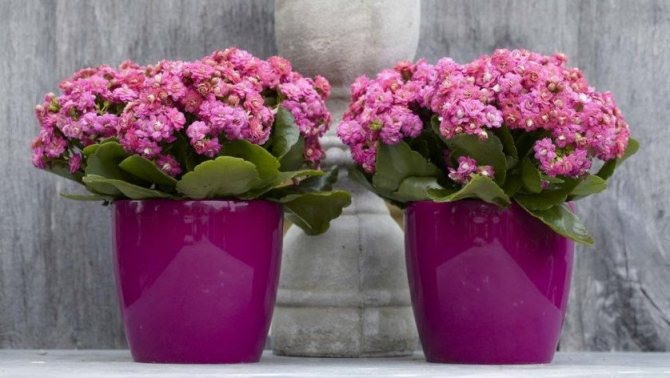

Best time to transplant
In early spring, it is necessary to decide whether it is necessary to transplant the Kalanchoe. If you have free time, then this procedure will not be superfluous, but if it is stressful over time? Then you need to find out whether the space of the pot is filled with roots. To do this, while fluffing the ground, gently lift the pot, and then remove the top layer of the earth. Visually, this is easy to identify. In the event that the roots have grown strongly, you need to immediately buy or look in your bins, and transplant a larger pot.
In a very cramped pot, the plant will not feel comfortable, the flower can slow down its development and even die. Another important fact is that it is advisable to transplant in the spring, at least in the fall. In other seasons, they are transplanted only if absolutely necessary.
Plant transplant as a pest control method
A variety of pests can be one of the reasons for an emergency plant transplant. Powdery mildew, gray mold, aphids, spider mites, mealybugs and other parasites can be destroyed even by the so-called folk methods. Dense lather can be an effective and at the same time simple and cheap method of pest control. To do this, you need to use laundry soap, you cannot take scented liquid soap. It is advisable to repeat the procedure several times. If this remedy does not help, you can use the chemicals that biologists recommend, among them derris, karbofos.
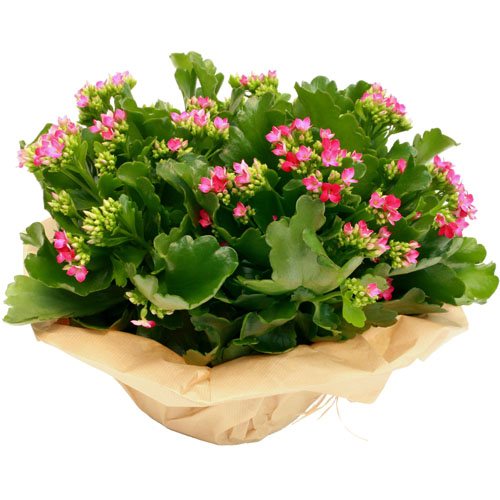

You can destroy scale insects and mealybugs with the help of alcohol, smearing the places of accumulation of pests.It is highly undesirable to transplant during the flowering period. This should only be done as a last resort if an ailing flower needs so-called emergency care. For example, if a plant is ill with late blight rot, then it is necessary to immediately stop watering, process the trunk and leaves, and if all these actions did not give the desired result, then transplant it into another pot, completely change the soil and, preferably, into a completely new pot. If it is not possible to process the old pot well.
Kalanchoe and feng shui (feng shui)
In recent years, it has become fashionable to use knowledge of feng shui when updating the atmosphere in the house and apartment. Flowers play an important role in this process. Blooming plants in a beautiful ceramic pot will decorate any room. Kalanchoe will help improve your mood. To do this, the flower must be placed on a windowsill that faces the southern or at least southeastern, southwestern side.
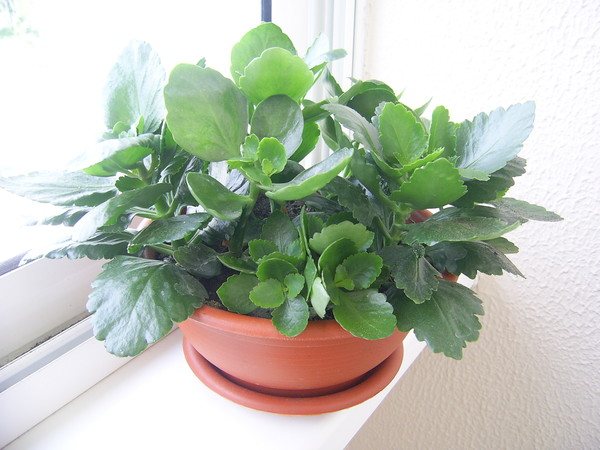

Kalanchoe helps to restore strength, those who feel chronic fatigue are forced to work through strength, the flower will give strength for further activity. We need to place it in the bedroom. Kalanchoe is especially indicated for the elderly in a depressed state. The flower will help to find inner balance, not to fall completely into despondency. The plant takes negative energy onto itself. Plus, the flower cleans the air in the house well, has antiviral and antibacterial properties.
Description
Kalanchoe are beautiful flowering indoor plants that are easy to grow. Flowers will delight with aesthetics and a light, pleasant aroma in winter, when other indoor plants are in the resting stage. Kalanchoe is a great option for a home plant, and you can also give it to friends. To do this, the flower is purchased in a store (usually Kalanchoe is sold to blooming ones so that you can appreciate its beauty) or they are grown on their own.
Kalanchoe is a plant native to Madagascar. It is distinguished by thick leaves and stems, which are necessary for the flower to accumulate moisture. Currently, there are 200 known varieties of the plant. At home, they often give preference to decorative varieties "kalandive" (has terry inflorescences), "blossfeldu" (differs in serrated leaves), etc., but they require special care.
Potted flowers as part of the interior design
In modern offices, apartments and houses, there are often a lot of flowers in pots. Skillfully selected, they not only look great in various modern styles, but also greatly complement the decor of the premises. Some amateur flower growers allocate a separate space for flowers - like a mini-gallery - on balconies, verandas, part of the room, decorate arches with flowers.


Of course, such compositions look great, if the area does not allow, then they vertically green the space as much as possible - placing racks, stands and brackets on which many pots of flowers are concentrated and, of course, window sills are used. Having experience with the formation of the crown of plants, you can achieve various phytodesign findings and solutions that will make your home unique. Thus, we can say that flowers harmonize living and working space, improve energy in the home and office.

